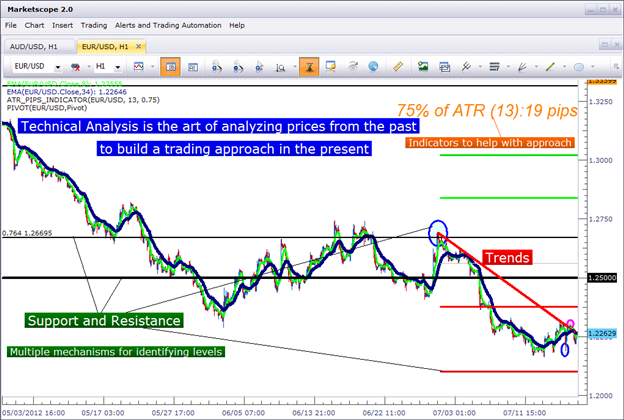Fundamental Analysis for Trading
Post on: 16 Март, 2015 No Comment

Fundamental Analysis for Trading 5.00 / 5 (100.00%) 1 vote
In order to succeed in any kind of financial trading, its necessary to find ways of forecasting price movements. To do this, you have to be able to study the markets, to help you predict whether an asset will rise or fall. This requires you to be familiar with both technical analysis and fundamental analysis for trading.
Technical analysis primarily uses charts to look at past price movements, and interprets these to help in predicting future price movements it is concerned with actual price movements, not the reasons for them. Fundamental analysis for trading takes a more long-term and in-depth approach, looking primarily at economic factors, known as fundamentals. This is the approach used by the majority of analysts on Wall Street.
When used in trading on the stock market, fundamental analysis looks at all the data that can be obtained about a company to determine its intrinsic value, believing that simply looking at stock performance doesnt tell the whole story. In currency trading, this approach involves studying all available information on the country whose currency is being traded, to identify any factors that could affect the currencys performance. As currencies are traded in pairs, this information has to be obtained for both countries.
The type of information that is relevant for currency trading covers a very wide area, as it can comprise anything that could possibly affect the currencys performance. This could include major political happenings, like an assassination or the events of 9/11, or even an election result, and also natural and climatic events like earthquakes and hurricanes. However, what you will mainly be looking at will be economic indicators.
Economic indicators are snippets of economic data published by various agencies of a given country, from both the government and private sectors. They fall into two groups, leading and lagging. Leading indicators are those that can be used to predict changes to the economy, while lagging indicators follow changes, so they can be used to show what is currently happening.
For example, in the USA, among the major lagging indicators are the GDP (gross domestic product), the CPI (Consumer Price Index, indicating the inflation rate), the CCI (Consumer Confidence Index) and the trade balance. Important leading indicators include the stock market, interest rates, and the ICE (Index of Consumer Expectations). Each country has its own sets of indicators, and for whichever country you are studying you need to know when the indicators are due to be released.
Its not only important in fundamental analysis for trading to have this information, but to know how to use it. For each country you need to know what factors are most important for instance, if inflation is a more major issue than GDP, the inflation figures will have more effect on the markets than the GDP figures. Crucially, remember that the numerical value of any indicator is less important than the extent to which the figures have already been anticipated by the markets.
Learning to use fundamental analysis for trading will certainly help you to gain expertise in predicting price movements. However, it would not be sensible to ignore technical analysis altogether. Each approach can complement the other, and both can make a valuable contribution to the way you study the markets.














